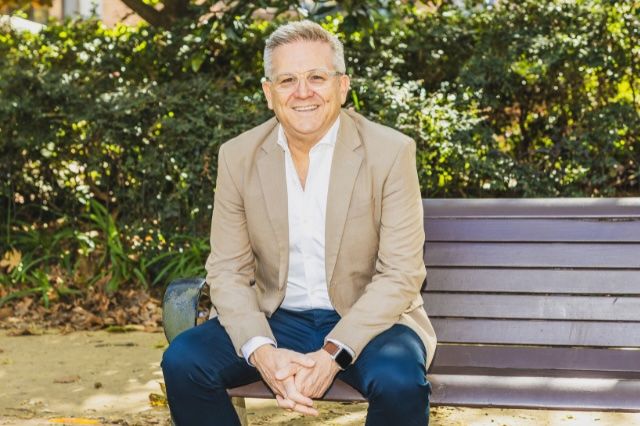
Australian teachers are clocking serious hours and paying a heavy mental toll. Full-time educators report averaging 53–55 hours per week – with 25% exceeding 55 hours – and a staggering 90% say workload is undermining their teaching.
A study by The Black Dog Institute found 70% feel their workload is unmanageable, while nearly half (46.8%) are considering leaving within a year – and 60% of recent absences were due to mental health issues.
In NSW, 49% of teachers report feeling regularly or constantly overwhelmed, with 40% of secondary educators saying work negatively affects their health.
One expert who has been following this issue closely is Dr William DeJean – Founder and CEO, Unleash Learning, an educational consultancy that empowers schools and organisations with a systemic, evidence‑based approach to “make learning truly stick” for everyone.
Dr DeJean, who began his career more than 25 years’ ago as a high school teacher in San Diego, is a recipient of the 2003 San Diego Teacher of the Year Award and has since taught at universities across Australia and the USA, developing a unique international perspective on education.
Now based in Sydney, he travels globally to support schools and organisations through Unleash Learning.
Moving beyond the ‘old way’ of teaching
Recently, Dr DeJean published a new book ‘A New Way Forward For Schools: Advancing Teaching and Learning in the Era of Overwhelm’, which offers teachers and leaders a simple, research‑based system that “cuts through the noise”, lowers stress, and helps make meaningful, school‑wide improvements in teaching and learning.
“I describe the era of overwhelm as our current time when schools are buried in information, new ideas and new ways of doing things,” Dr DeJean told The Educator. “School might find themselves trying to ‘keep up’ with the latest strategies, initiatives, frameworks, and requirements.”
Dr DeJean says this environment can increase stress and mental load as everyone tries to keep up and because of all the constant changes and shifts of direction, can leave people questioning whether you and your team are truly creating an impact that lasts.
“There may be a temptation to think that if people work hard enough, they can keep up – but the truth is, they can’t anymore.”
Dr DeJean’s book says the traditional way of teaching can be “inconsistent, ineffective and inefficient” in that it’s short-term, focused on individual teachers or small groups.
In most schools, says Dr DeJean, the “old way” of teaching tends to look and feel siloed, piecemealed, as if everyone is trying to keep up, short-term, and like the school is “chasing the latest new thing.”
The new way, however, can advance teaching and learning consistently, effectively and efficiently, he says.
“In schools, this new way gets to the crux of everyone’s thinking, is mission-driven, can evolve with the times and – once in place – will last for years to come.”
Compliance thinking VS strategies thinking
Dr DeJean stresses that it is important to recognise the difference between compliance thinking, strategies thinking and systems thinking.
“Compliance thinking happens when teaching and learning activities are mandated or people are just following prescribed teaching and learning operations,” he said.
“Strategies thinking is where teachers see effective teaching as just teaching strategies to use or follow with teachers picking the ones they like to use or are simply trying to keep up with the latest thing.”
Dr DeJean said systems thinking happens when teachers know their teaching and learning destination and use a system to reach that destination.
“With this thinking, when educators learn new information, they’re able to put it into the system, rather than automatically jump to something new or try to keep up with the latest thing,” he said.
“This kind of thinking takes time and requires a specific structure to be embedded, maintained and supported across a school. But once it sticks, change lasts. It’s the kind of thinking needed in the new era of overwhelm.”
Dr DeJean said when a new wellbeing initiative comes to a school, with the right mission (to make learning stick for everyone) and system that everyone uses to reach it, a team will quickly see where it fits into and enhances their teaching and learning objectives.
“Teachers might adjust their classroom set-up based on their knowledge of student wellbeing, strengthen how they link content to the lives of their students, and use their deep understanding of engagement to enhance wellbeing for all their students,” he said.
“In the era of overwhelm, this helps lower mental load while advancing teaching and learning across a school.”
‘What’ and ‘How’: The two most important types of data for a teacher
Dr DeJean said while schools are “flooded” with data, there are two kinds of data to consider when seeking to advance teaching and learning.
“The first is the ‘what’ data,” he said. “Are you measuring what your school network or state believe are important student learning outcomes? This data is often measuring how well these items are sticking.”
Dr DeJean pointed out that some of these items often come from outside sources, such as the state, district, network or organisation.
“The next is the ‘how’ data; these data measure how teachers are using the craft to make learning stick for everyone,” he explained. “In the case of The Unleash Learning System™, these data measure how collectively the entire school is using aspects of the Keys to reach your teaching and learning mission.”
Dr DeJean noted that while the ‘what’ data can change, “the right ‘what’ data will not”.
“When you focus the second, you’re focusing on the secret that advances teaching and learning and can lower mental load. For good.”

